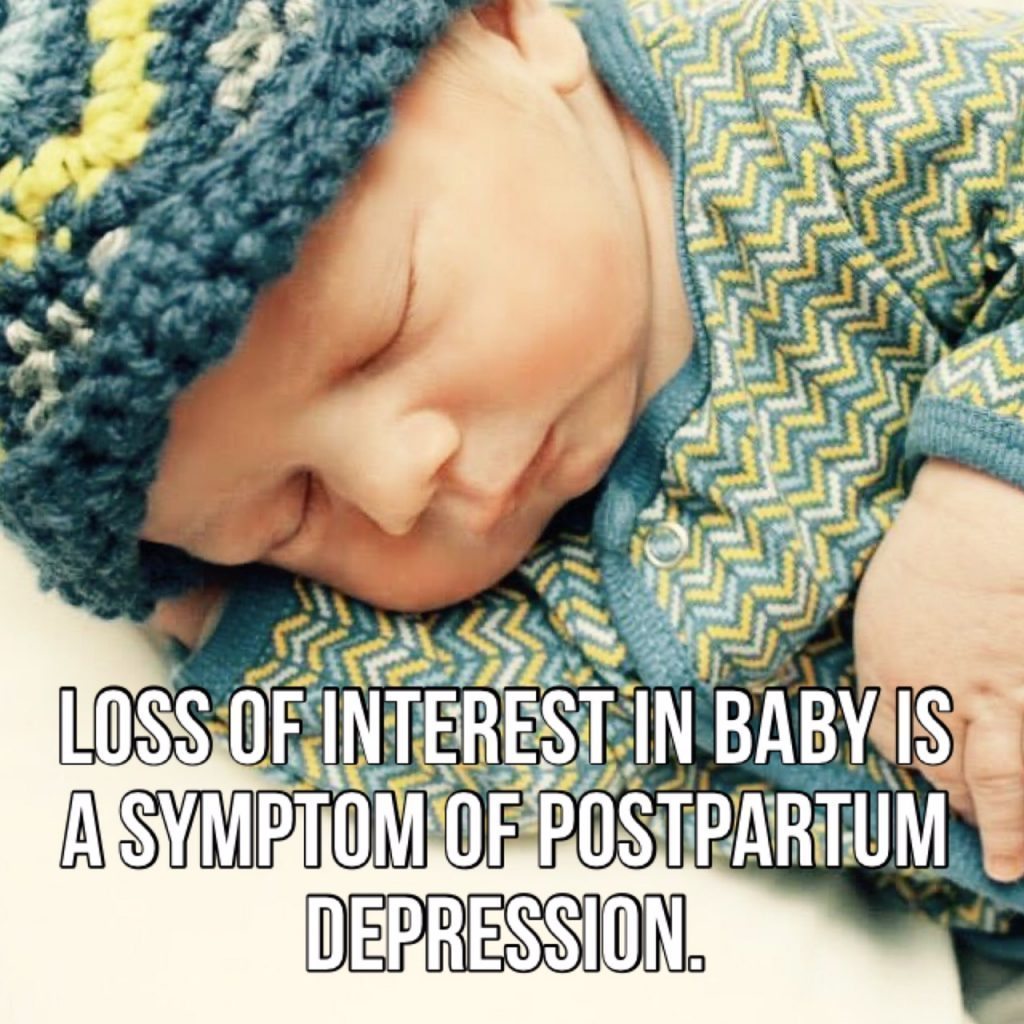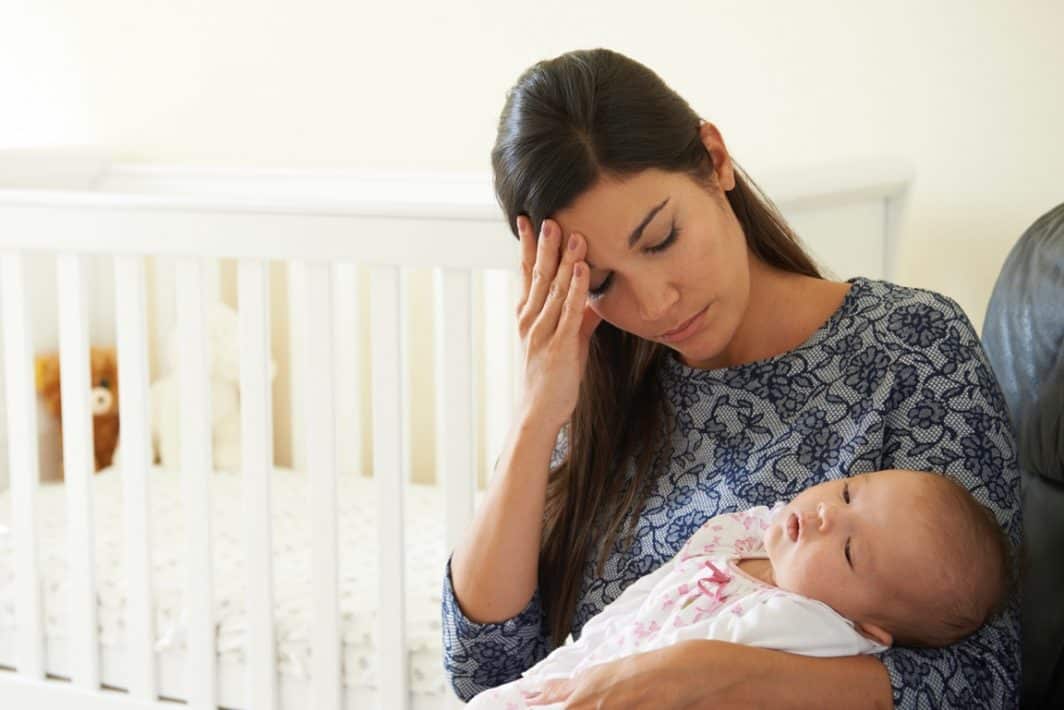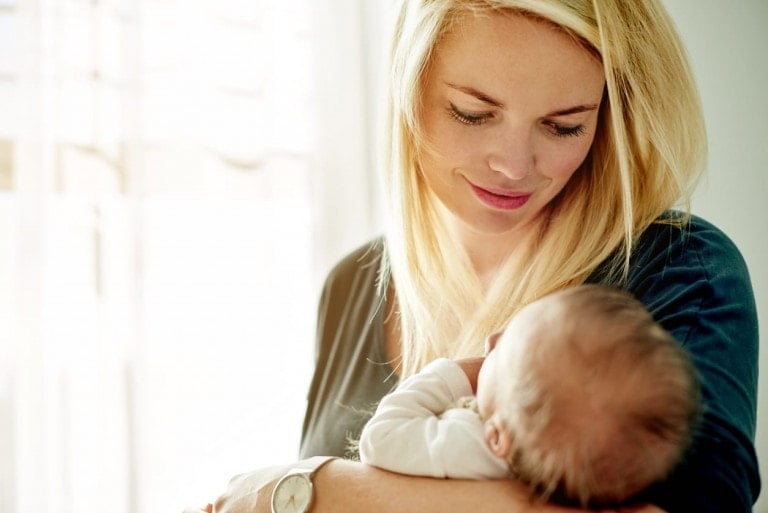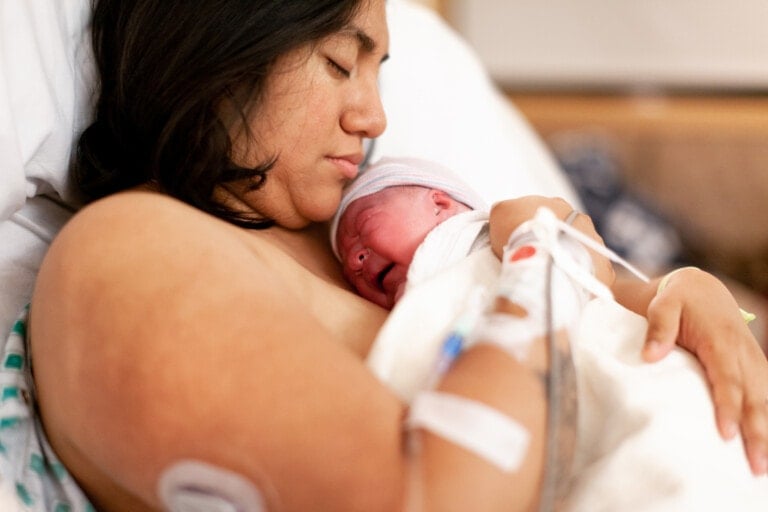Studies say up to 80% of new mothers experience normal baby blues.4 The exact causes of the baby blues are unknown, but they are thought to be a combination of biological and psychosocial factors. Biological refers to changes in the levels of hormones that were previously produced in pregnancy. Psychosocial is all about the changes that arise from having a new baby. Things like fatigue, sleep deprivation, changes to relationships, relationship strain, change to routine, etc.1
For many new moms who have spent their entire pregnancies anticipating the arrival of their little ones, it can be pretty surprising and potentially shame-inducing to feel sadness or anxiety after having their precious baby. It’s supposed to be the happiest time in their lives, but they don’t feel happy. And that reality in and of itself can be depressing.
What are the Baby Blues?
The baby blues are generally experienced within the first two weeks after delivery. Baby blues are typically characterized by these symptoms:2
- feeling sad or weepy
- irritability
- overly emotional
- difficulty concentrating
- Mood swings
- Anxiety
- Having trouble making choices
- Change in appetite
- Fatigue or having trouble sleeping
In the first two weeks after all three of my previous deliveries, I experienced a feeling of intense clinginess to my babies. I remember asking my sister to hold my first son beside me while I slept. With my third son, I also felt heightened anxiety. I was worried something would happen to him. And I was worried about everything. Luckily, after the first few weeks, my symptoms stopped, and I began to feel normal again.
However, 10-20% of women experience a more severe version of the baby blues called postpartum depression.4 Postpartum depression can occur anytime within the first four weeks postpartum, right up to a year after having your baby, so it is important to recognize the symptoms.3
What is Postpartum Depression?
Postpartum depression symptoms are similar to the symptoms of baby blues but are more severe and persist for longer than two weeks.5 In addition to feeling the symptoms listed above, moms with postpartum depression may also feel:2
- feeling worthless
- losing interest in usual activities
- lacking interest in your baby
- thoughts of self-harm or harming the baby

Who Gets Postpartum Depression and Why?
Like the baby blues, who will get postpartum depression or why is unknown. But certain risk factors make it more likely to be present:3
- A history of depression or anxiety
- A family history of depression
- Stressful life events which occurred during pregnancy
- Birth-related trauma (emotional or physical)
- History of trauma (including sexual abuse/assault at any age)
- Previous stillbirth or miscarriage
- Low self-esteem
- Lack of social support
- Relationship stress or lack of emotional bond with significant other, family, and/or friends
- Lack of financial resources/money
- Having an unplanned/unwanted pregnancy
- Challenges breastfeeding
If, for any reason, you end up having thoughts of harming yourself or your baby, do not panic. Instead, tell your closest confidant that you have experienced these thoughts or feelings, and get their support to seek professional/medical assistance. If you don’t think you can admit to someone that you are having problems, set up an accountability team before birth to check in with you regularly post-delivery. This should continue throughout the first year.
Postpartum depression doesn’t have to be severe or lengthy as long as you address it and take action. The first step is scheduling an appointment with your OB or another trusted health professional so that they can listen to your symptoms and then refer you to a psychologist or psychiatrist for appropriate medicine or psychotherapy. With proper treatment and therapy, you can quickly address symptoms. And a new mother can return to everyday mom life, enjoying her sweet and wonderful baby!
Don’t be ashamed to ask for help!
However, some women wait too long or don’t know how to get help. And others may not recognize the symptoms they are experiencing. So it is crucial to speak up if you feel like a friend does not seem like herself post-delivery. If you notice behavior like a lack of interest in her baby or tears every time you see her, don’t be afraid to step up and say something. She will thank you later.
Several friends who experienced postpartum depression say it was really after the first year passed that they looked back and realized something was wrong. But they didn’t know how bad it was at the time. And they wish they would have gotten help sooner.
There is nothing wrong with a woman who experiences baby blues or postpartum depression. It is normal to experience some form of the blues. It is not a sign of weakness or impairment, and you can do nothing to prevent it. However, it is your responsibility to be honest if you need help! So please don’t be ashamed to do so, not only for yourself but also for your precious baby.































